How to remove underarm stains on clothing?
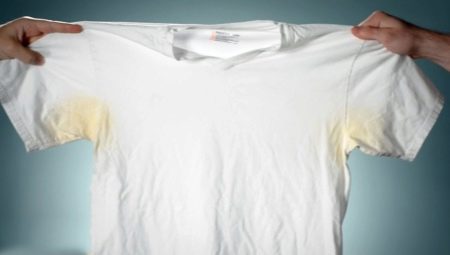
The emergence of effective means of combating the smell of sweat and increased sweating - antiperspirants, conventional and perfumed deodorants, has successfully resolved the issue of masking the unpleasant odor of sweat gland secretions. But another problem arose - the use of deodorant agents, no matter how high-quality they are, provokes the formation of unaesthetic spots on things in the armpits. Almost every self-respecting manufacturer of household chemicals promises to destroy this kind of pollution and quickly return an attractive look to your favorite blouse or shirt.

Every day we are offered a wide variety of cleaning products with revolutionary formulas of active oxygen as a washing catalyst, antibacterial effect without chlorine and harmless analogues of surfactants. It's all good, but do not forget about the possibilities of time-tested tools, perfect for removing treacherous sweat marks and streaks from deostiks and gels. Let's talk about how to remove stains on clothes in the armpit area and what are the most effective cleaning methods.

Causes of occurrence
Sweating is an absolutely normal process for a person. When the sweat glands (PZh) work, this indicates the metabolic processes taking place in our body. The number of pancreas is about 2.5-3 million. They respond to thermoregulation and participate in the elimination of toxins.
How strong the sweat smells depends a lot on personal hygiene, which includes the use of antiperspirant deodorants.When deo-means come into contact with sweat, and their greatest concentration falls on the armpit area, then the clothes in this place are often covered with ugly stains and stains.
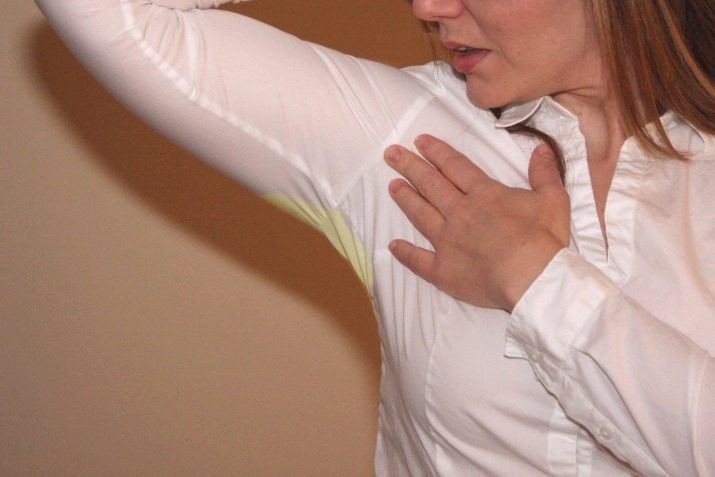
The most common triggers for this unpleasant phenomenon are:
- The zinc content in the overwhelming majority of antiperspirant deodorants is the No. 1 cause of yellow stains. And many deo-products cause abnormal sweating in people with allergies or individual intolerance to the components of caring cosmetics. The conclusion is obvious: the more sweat, the more intense the color of the stains.
- Sloth, that is, a banal neglect of hygiene or improper observance of the rules for keeping the body clean. The yellowness in the underarm area is often formed as a result of the vital activity of bacteria and fungi, and sweat for them is an object of increased interest, since it is a favorable environment for actively multiplying.

Quite a rare cause of "spotting", but it also cannot be ruled out - chromidrosis (chromohydrosis). This is a manifestation of any pathologies in the body in the form of colored secretions produced by the apocrine glands. Due to the activity of microorganisms inhabiting the skin and sweat glands, sweat becomes yellowish, greenish, reddish. Regardless of the absence or presence of diseases accompanying chromidrosis, it provokes a peculiar coloration of bilirubin.
It is secreted by the sweat glands of those who live in areas with an environmentally unfavorable environment or work in hazardous industries.
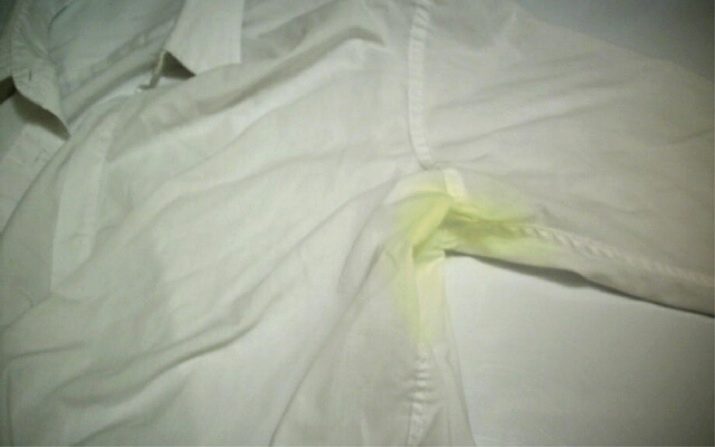
General rules
Here are some general recommendations regarding measures to clean clothes from contamination, the origin of which is associated with the physiological process of sweating.
What is important to know:
- New methods of removing stains are tested as follows: a small area of matter is processed in the most "inconspicuous" place. If the fabric is damaged, the defect will not be conspicuous.
- When removing stains, the wrong side of things is always treated, especially if strong substances are used.
- Strong mechanical effects on stains during the cleaning process are unacceptable. Increased friction and compression can disrupt the structure of the fibers of the fabric, as well as provoke the destruction of coloring pigments in the deep layers of the fabric, which will lead to a loss of color in this area.
- The main condition for removing sweat marks on clothes made of white fabrics is to use a working solution of a permissible temperature up to 30 ° C. Hot water will further fix the stain, making it difficult to remove. Exposing the matter to heated air from an electric dryer will increase the unpleasant odor.
- When handling chemicals, it is important to use rubber gloves to protect the skin and to maintain good personal hygiene.
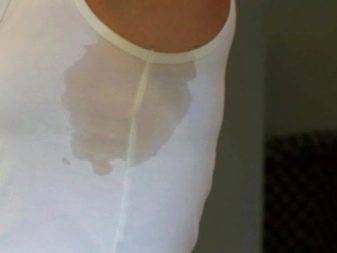
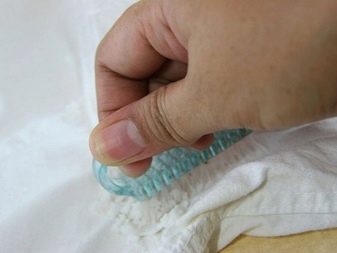
Prohibited funds
Let's immediately clarify the question of which cleaning agents should be discarded when removing stains in the armpit area. Unless, of course, intentional damage to things is not part of your plans.
So, for sweat stains it is contraindicated:
- Contact with any kind of chlorine bleach, and it doesn't matter what kind of things they need to wash - colored or white. As a result of a chemical reaction, the participants of which are chlorine and proteins contained in the secretions of sweat glands, textiles darken, and problem areas acquire a more intense color.
- On silk products - methane carboxylic acid (vinegar essence) / acetone.
- On synthetics (acetate silk, nylon, nylon) - the use of gasoline, substances containing impurities of gasoline, acetone and acetic acid.
- On cotton fabrics - treatment with strong acids (oxalic, hydrochloric), which destroy matter, and oxidizing agents.
- On linen fabrics, strong inorganic acids and soda are used.
- On things made of natural wool, the use of alkaline solutions, including diluted ones, as well as oxidizing agents.
- On colored things - interaction with the simplest representative of ketones - acetone (propanone-2). Acetone is one of the provocateurs of fabric discoloration.
In addition, be sure to pay attention to the tags on your clothes. They usually contain all the information that will help not to spoil the thing after washing.


We get rid of dirt of different colors
The possibility of using certain means for removing sweat stains is primarily determined by the color of the clothes. Things made of fabrics of different colors also react differently to processing with the same preparations. What is suitable for white fabric may be completely unsuitable for black, let alone whimsical colored fabrics. In addition, when choosing a cleaning method, the color of the stains themselves is taken into account.

Yellow
Many of us, perfectly aware of the complete impracticality of light things, continue to wear them. After all, it is quite difficult to resist the magic of white. As attractive as white blouses and shirts look, just as disgusting is the contrast of yellow sweat stains and snow-white fabric.
Since the fight against sweat stains on light-colored clothes has been going on since the times when there were no progressive stain removers at the disposal of housewives, this kind of pollution was removed with improvised means.
And with their help it was possible to achieve an excellent result.
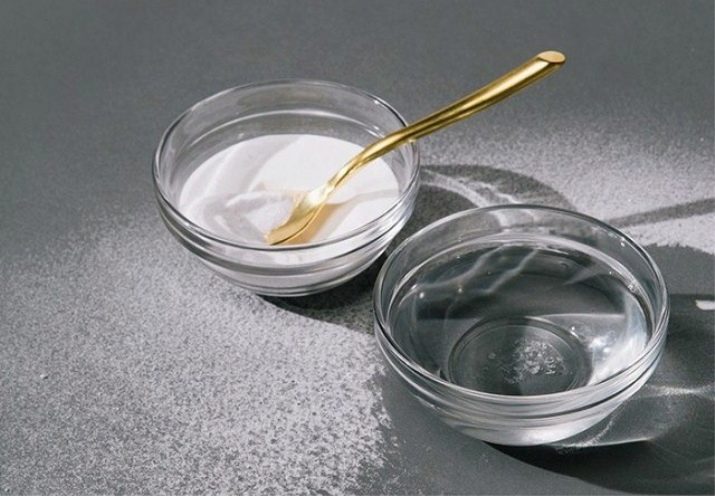
You can remove fresh yellowness in the following folk ways:
- Soda. Cleansing mix recipe: water (30 ml) + soda (90 g). After processing, the clothes are kept for a couple of hours and washed at a temperature of 15-20 ° C.
- 9% acetic acid. A working solution is made: water (1 l) + 9% vinegar essence (15 ml), the stains are moistened, and then the thing is washed in the usual way.
- Peroxide. Prepare a soaking solution: 3% peroxide + water (1 liter) and leave the product in it for half an hour.
- Acetylsalicylic acid. Aspirin (1 g or 2 tablets) is crushed to a powdery consistency and dissolved in water (100 ml). The resulting mixture should look like thick sour cream. It is applied to problem areas and kept for 3 hours.
- Table salt. Cleansing extract recipe: water (200 ml) + salt (30 g). Treat contaminated areas, leave for a couple of hours.
- Citric acid. Spray recipe: water (200 ml) + citric acid (30 g). Spray on yellow areas, wash after 2 hours. Water for washing should be cool.
- We will ammonia with salt. Dissolve salt and ammonia in water, treat the stain, wait half an hour and wash.
- Laundry soap with oxalic acid. Powerful bleach recipe: soap shavings (½ cup) + water (200 ml) + acid (15 ml). It is applied to the problem area, after 10 minutes the product is rinsed, and then washed.
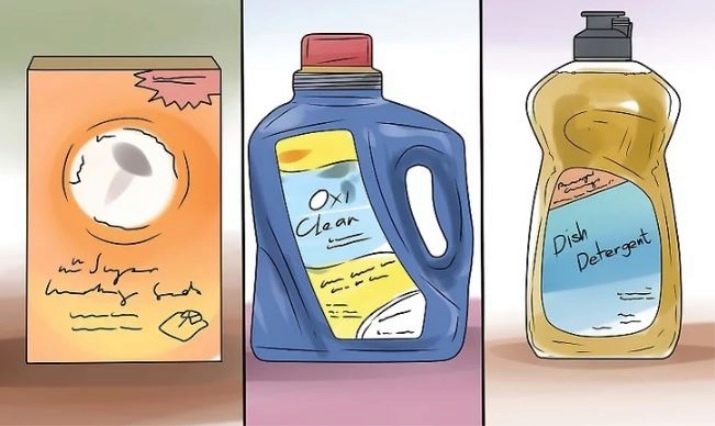
Traditional boiling should not be neglected.especially when you want to get rid of underarm sweat on shirts and blouses made of cotton or linen. To maximize the effect of boiling, add ½ cup of soap shavings to the tank with things. The optimal boil time is 3 hours. It is important to keep the heat low and remember to stir the laundry periodically.
The effectiveness of the listed products as stain removers extends mainly to natural fabrics. Traditional processing of lace, chiffon, viscose and similar delicate fabrics is undesirable. It is better to entrust things from them to oxygen-free chlorine-free stain removers or the well-known Fairy, only necessarily transparent.
A working solution is prepared: 30 ml Fairy + water (18 ml or 1 tbsp. L) and applied to the stain. The clothes are washed after a couple of hours.
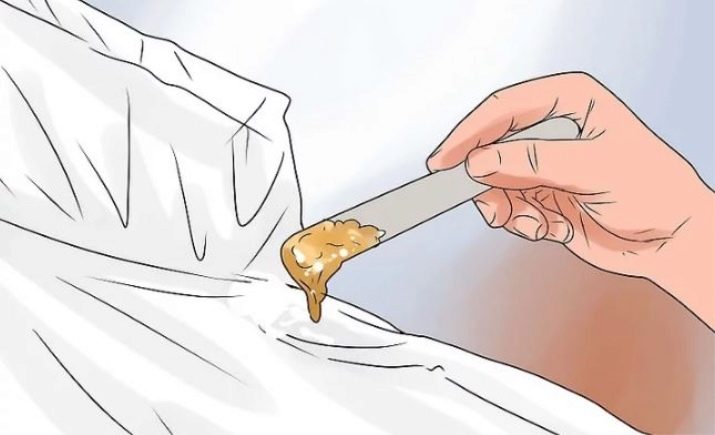
Old yellowness has to be removed by combining various methods:
- Soaking in a solution of soap shavings + processing with gruel from crushed aspirin + washing + half an hour soaking in peroxide + repeated washing.
- Half an hour soaking in a solution of 9% vinegar essence (dosage: water 5 l, vinegar 30 ml) + treatment with ammonia + rinse + treatment with lemon juice and 2 hours soaking + washing with ordinary powder.
- Application of gasoline + ammonia treatment + 2-3 machine wash cycles to remove specific odors.
- Processing with a mixture of egg yolk with denatured alcohol. The product is left until a characteristic crust is formed, then heated glycerin is applied and washed as usual.
- You can wash off old spots on your armpits using a combination of soda + 3% peroxide + detergent. A mixture is prepared from these ingredients, the dirty places are treated, left for 2 hours and rinsed well.
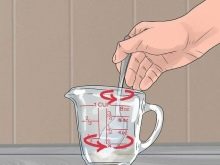
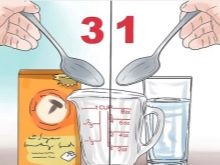
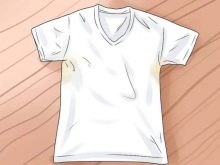
White
Sweat stains spoil the appearance of both white and colored items. Only on light-colored fabrics sweat appears yellow, and on colored fabrics - white stains. If regular washing gets rid of fresh stains, then old stains, coated with salts of deo-agents, have to be removed with more radical means. Deodorant marks on things can be easily cleaned with alcohol. You need to moisten a cotton pad in it and gently rub the stained area.
Other cleaning methods involve processing:
- Dishwashing liquid: holding time - an hour, then the product is washed.
- 9% vinegar essence: holding time - 10 minutes.
- Citric acid - they wait for the reaction to start and wash it off.
- With ammonia: holding time - no more than 2-3 minutes.
- Baking soda / table salt: holding time - half day.
Professional stain removers are used strictly following the manufacturer's recommendations.

Dark
Wearing dark clothes is also not a panacea for the formation of sweat marks in the armpits. The methods for cleaning brown and black items are the same as for colored items. The main guideline when choosing a suitable method is the type of matter.
What means is it recommended to process dark clothes:
- From wool - soap shavings, sodium thiosulfate (30 g per 200 ml of water), a mixture of acetone + ammonia + denatured alcohol in a ratio of 3: 2: 4.
- From cotton / flax - diluted ammonia, a mixture of ammonia and salt.
- From silk / satin - with warm saline solution, a mixture of ammonia + white spirit at the rate of 1: 2, a solution of sodium thiosulfate of a more gentle action.
- Leather - table salt, ammonia solution.
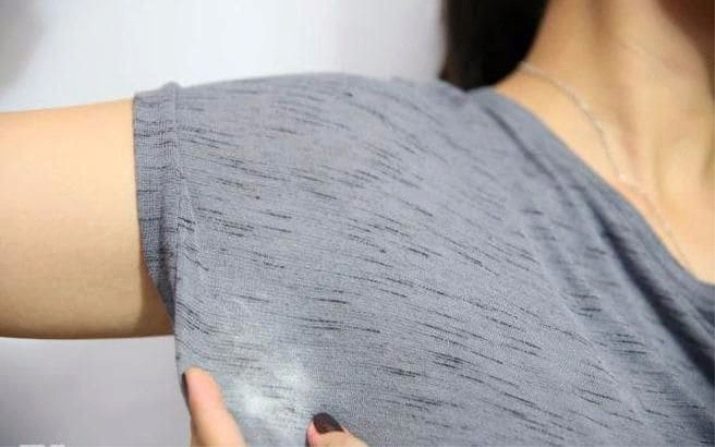
How to remove the smell?
There are several ways:
- To remove the stubborn smell of sweat from clothes, the processed and washed product must be ironed through a cloth moistened with vinegar, set to a high temperature and using the steam function. After that, the product will smell good.
- Ultraviolet light and frosty air are equally effective in removing persistent odors. After drying things in the sun during the day or on the balcony all night, there will be no trace of the pungent smell.
- Before you finally wash a T-shirt, sweater or shirt after treatment with stain removers, it is advisable to spray them several times with a spray with 3% peroxide, boric acid, aspirin or soda. It is especially convenient to do this when combined cleaning methods are used. In between treatments, you just need to remember to use the spray.
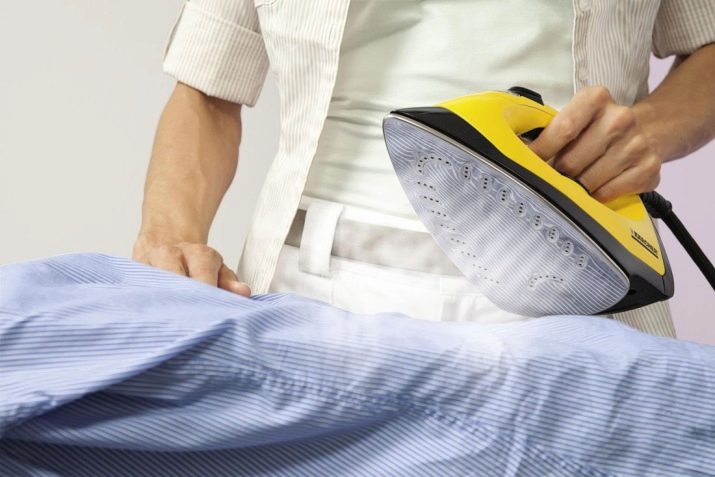
How to dry?
Heating radiators and electric dryers are unwanted helpers for drying processed items. The optimal conditions for this are fresh air and direct sunlight. Therefore, the washed products, turned inside out, it is better to hang it on the street or balcony. If you have to dry them indoors, then you need to provide good ventilation.

Advice
As mentioned, increased sweating can be due to a variety of reasons. Without taking into account the disease, sweat glands often work in an enhanced mode due to deodorants and their improper use.
Therefore, the indicated problem can be solved by following simple rules:
- After treating the armpits with deodorant, you need to let it dry completely, and only then start dressing.
- Choose quality antiperspirants.
- Replace your usual deodorant with a crystalline one. Its purchase will cost more, but the effect is worth it.

Signs of a good deo remedy:
- Provides long-lasting antibacterial protection and a feeling of freshness throughout the day.
- Has a moisturizing and softening effect.
- Has a high absorption rate.
When choosing a deodorant, it is necessary to take into account the individual characteristics of the body: the degree of perspiration and the predisposition to allergies.
Not less important:
- Wear fresh clothes every day, especially during the summer season.
- In case of intense sweating, put underwear under the shirts. A thin white T-shirt will help absorb excess sweat.
- Purchase natural things. Cotton, linen and wool have good breathability.
Prophylaxis
Of course, it is better to prevent the formation of yellowness and streaks on clothes than to spend time looking for a suitable cleaning agent and worry about the reaction of your favorite thing to the stain remover.
Preventive measures:
- Most Effective Sweat Stain Removal Guideline: Never put off until tomorrow what you can do today. The longer you wait with cleaning, the deeper the stains will penetrate into the fabric.
- It is worth doing the washing of white things "in advance", without waiting for the formation of yellowness. Objectively, snow-white clothing loses its attractiveness after the first two socks.
- For those who sweat a lot, it is worth purchasing anatomical pads for the armpits. They will soak up the secretions without worrying about stains.
- Depilation and epilation of armpits, daily showering, especially in summer - all this also helps to prevent the occurrence of sweat marks.
- Excessive sweating, as well as pronounced unpleasant amber, is a reason for a visit to the doctor. If health is normal - excellent, then all that remains is to follow the tips and recommendations given above.
For more information on how to remove stains on clothing in the armpit area, see the next video.








